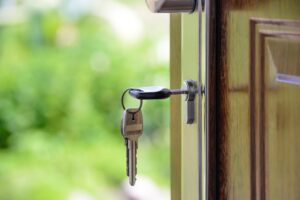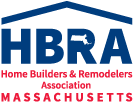 After you’ve got your new home keys in your hand, it’s time to start your next chapter. Finding or hiring movers is likely at the top of your list. Once you’ve finalized those details and settled into your space, there are other to-do items you should consider completing to help enjoy your new home. To help you transition smoothly into your new home, consider adding the following items to your agenda.
After you’ve got your new home keys in your hand, it’s time to start your next chapter. Finding or hiring movers is likely at the top of your list. Once you’ve finalized those details and settled into your space, there are other to-do items you should consider completing to help enjoy your new home. To help you transition smoothly into your new home, consider adding the following items to your agenda.
Change the Locks
If you bought an existing home, you don’t know who might have a set of your house keys. You should rekey your home immediately. You can hire a locksmith or take on this first home owners’ task on your own. According to the National Crime Prevention Council, burglars look for easy targets, and locks are critical to keeping your family and your property safe.
Send out Change of Address Notifications
First, let the U.S. Postal Service know you’ve moved to a new permanent address. You don’t want to miss an important piece of mail as you are transitioning to your new space. Then, make a checklist of all those places you usually receive mail from and notify them. Your list will likely include banks and other financial institutions, utility companies, insurance providers, employers and government agencies, such as the Internal Revenue Service or Social Security Administration. Consider sending change of address cards to your friends and family in the mail or through email as well.
Learn How Your Home Works
Everything is different in a new home. It is always best to be prepared if an unexpected issue arises with your new home. There are three common functional areas of your home to note:
- Find the circuit breaker or fuse box in case of a power outage or related electrical issue.
- Locate your water shut-off valve, in the event of a leak.
- Test your smoke and/or carbon monoxide detector. Because you recently moved in, your detectors should function properly, but you don’t want to place yourself or your family at risk in case they’re not.
Childproof and/or Pet-proof Your Home
Your home is a new space for everyone, including curious kids or pets. Before you settle in, make sure the environment is safe for everyone in the family. Start by placing packing materials, which often include hardware, scissors and tape with sharp edges, out of reach. Next, the National Safety Council recommends childproofing high-risks zones in your home. These areas are potential sources of unintentional injuries. The zones include areas with water, heat/flames, toxic substances or areas potential for a fall such as stairs. For pets, make sure to keep hazardous items out of reach and look for dangling wires you might not have had in your existing space.
Plan a Home Regular Home Maintenance Checklist
You should regularly check, clean and/or test a wide variety of interior and exterior systems and structures. A robust home maintenance list can help keep your home functioning at an optimal level and save you time and money in the long run. The U.S. Department of Housing and Urban Development has a Home Maintenance Checklist to help you get started with the basic guidelines for keeping different areas of your home in the best shape.
For more information on homeownership, contact your local association, here.

